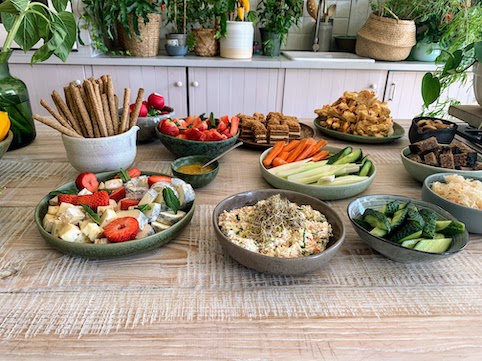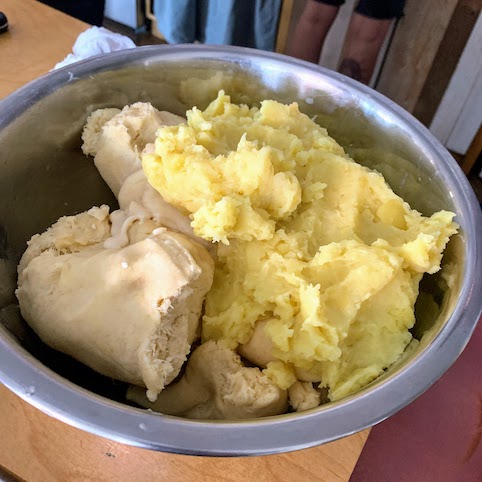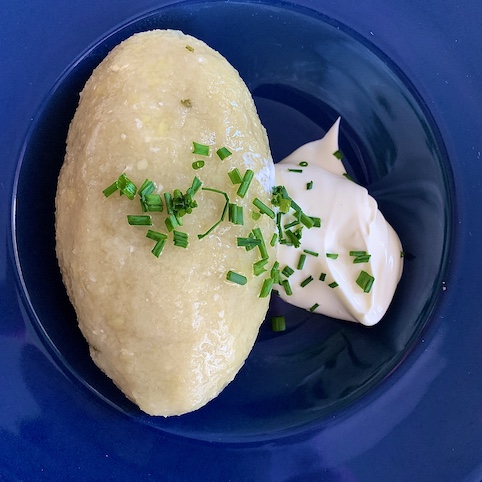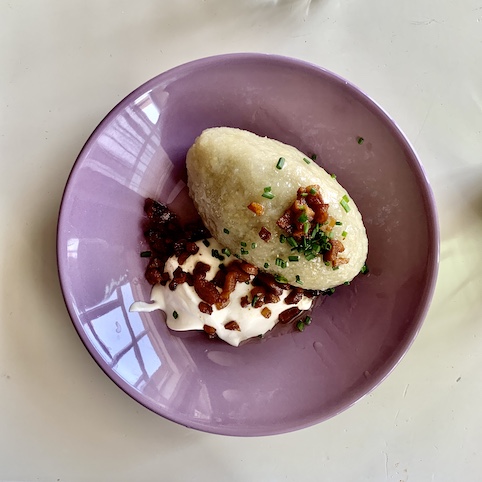On a recent visit to Lithuania Nick gets schooled in the making of a national dish, the Zeppelin
They’re big, they’re vaguely egg-shaped and they can easily destroy you. Lithuania’s classic dish is designed for cold winters and big appetites. Some Lithuanians see it as their ‘Sunday Roast’ and it’s the dish every grandmother has to make, like it or not.
‘In their 150 year history they weren’t always called Zeppelins (Cepelinai) actually’, my tutor explains, ‘the original name was didžkukuliai, or dumbbells’. No one seems to know why they were ever called that, though. Perhaps because they were once used for weight training? It would make sense.

We also eat some pickled gherkins because, like so many Baltic countries, Lithuania loves its pickles, as well as some tasty nuggets of that hard cheese.
We’re in the Vilnius cookery school/studio of Lithuania’s favourite TV chef. Nigellaski Lawsonovitch. Not really, her name is Beata Nicholson and she has created this gorgeous top floor space that is so tasty I would have it as my apartment at the drop of a Zeppelin.
Making zeppelins is seriously hard work. The main ingredient, you may not be surprised to learn, is potato and numerous raw tubers are pulped down with the aid of a special electric machine designed for this purpose. That such a machine exists tells you just how important this dish is in Lithuania.

After we have created a massive bowl of pulped potatoes we wrap it all muslin and attempt to squeeze every last drop of moisture out. This is incredibly hard work and perhaps explains why Lithuanian grannies all seem to have the upper arm girth of a shot putter. My own muscles are crying out for mercy within minutes.
The vast amount of water extracted is left to sit for thirty minutes or so in order to allow the starch to separate out, this recovered starch is then mixed back into the pulp with some cooked potato and some salt and sometimes onion.
The final result is similar to pastry dough, soft but not too moist, and very pliable. We shape it into a thickish round, add the minced pork ( we also do a cheese variant while we’re at it) and carefully close it up and mould it into the distinctive zeppelin shape.
The tricky bit is boiling the monsters, as there is a danger of them falling apart, which would be a HIndenburg-sized disaster. Cornstarch is added to the water, which apparently helps hold them together, and they are gently boiled for twenty or so minutes while I sneak off back to the fried bread and cheese.


Zeppelins are usually served with a bacon ‘sauce’. We get a large pan, fill it with lardons and cook it until all the fat is rendered off and the lardons semi-crispy. Soured cream and chives is also a traditional addition and that’s how we eat them.
Did I like them? Not especially. The filling was okay but the casing seemed rather bland and required a lot of that bacon and cream to make it interesting.
As I said earlier, this is serious belly timber because while right now in Lithuania’s summer it’s about 21C with clear skies, in the winter it can get well into the minus C for days, if not weeks, on end and you need hot, filling, food to survive.
I am assured by a friend’s Lithuanian wife, who is as thin as a rake, that Zeppelins done properly are delicious and not filling at all when eaten in the right season and I certainly don’t want to denigrate the national dish.
Indeed in one of Vilinius’s top hotels they are apparently served small and stuffed with crayfish in a light sauce, and I am told that leftover zeppelins are often broken up and fried for breakfast, which sounds rather tasty. Who doesn’t like fried potatoes?
There are plenty of zeppelin recipes online, and if energy prices continue upward, we could all do with hot filling meals this coming winter. So why not try making some yourself, but try not to get bombed.
Nick went with Go Vilinius. The best place to find out all there is to know about this exciting city.
